Pasko Rogulj: Austro-Hungarian Prisoner of Japanese, item 20
Transcription
Transcription history
-
On top outside the page
763.72114/1491
Summer Willis (3rd Sec in Tokyo Embassy) to
George W. Guthrie (US Ambassador Tokyo)
March 21, 1916
On page
AONAGAHARA
I have the honor to inform you that I arrived at Aonagahara at
12 o'clock on March 3rd. The camp is situated some five miles from the
station on a high open plain, it is comparatively new, the prisoners
having been moved here from Himeji. Where they had been lodged in a
temple ground and where the space for exercise was not sufficient, a
few months ago.
I was not at the entrance to the camp by the Commander and the
representative of the Garrison Commander. The prison enclosure, in
which are confined altogether 413 men, is large, and opens on a large
field where the men are daily permitted to play games. Within the enclosure
are two tennis courts for the use of the officers. On one side
is a separate house of pine boards with cement flooring where the eight
captive offices are lodged. Major Drachenthal, the senior of these,
occupies a separate room, the other officer sharing rooms. They have
a messroom, and separate and exceedingly well-kept kitchen and bath
quarters. They have moreover their orderlies to wait on them and to
cook for them. The buildings of the petty officers, non-commissioned
officers, and privates, are situated in rows in the rest of the enclosure.
Fifty privates and non-commissioned officers are in each
building, with five petty officers occupying a square room at each end
of these buildings. These are in dimension about 100 feet by 5 feet
each. There is also a large cement floored kitchen where cooking is
done for the whole number, and there is a canteen open daily for three
hours. The baths and sanitary arrangements are excellent.
The officers are allowed to provide themselves with what furniture
they want; the men, however, are allowed to use only the regulation
straw mattresses for their bedding. These mattresses are placed
extremely close to each
-
On top outside the page
763.72114/1491
Summer Willis (3rd Sec in Tokyo Embassy) to
George W. Guthrie (US Ambassador Tokyo)
March 21, 1916
On page
AONAGAHARA
I have the honor to inform you that I arrived at Aonagahara at
12 o'clock on March 3rd. The camp is situated some five miles from the
station on a high open plain, it is comparatively new, the prisoners
having been moved here from Himeji. Where they had been lodged in a
temple ground and where the space for exercise was not sufficient, a
few months ago.
I was not at the entrance to the camp by the Commander and the
representative of the Garrison Commander. The prison enclosure, in
which are confined altogether 413 men, is large, and opens on a large
field where the men are daily permitted to play games. Within the enclosure
are two tennis courts for the use of the officers. On one side
is a separate house of pine boards with cement flooring where the eight
captive offices are lodged. Major Drachenthal, the senior of these,
occupies a separate room, the other officer sharing rooms. They have
a messroom, and separate and exceedingly well-kept kitchen and bath
quarters. They have moreover their orderlies to wait on them and to
cook for them. The buildings of the petty officers, non-commissioned
officers, and privates, are situated in rows in the rest of the enclosure.
Fifty privates and non-commissioned officers are in each
building, with five petty officers occupying a square room at each end
of these buildings. These are in dimension about 100 feet by 5 feet
each. There is also a large cement floored kitchen where cooking is
done for the whole number, and there is a canteen open daily for three
hours. The baths and sanitary arrangements are excellent.
The officers are allowed to provide themselves with what furniture
they want; the men, however, are allowed to use only the regulation
straw mattresses for their bedding. These mattresses are placed
extremely close to each
-
On top outside the page
763.72114/1491
Summer Willis ((3rd Sec in Tokyo Embassy) to
George W. Suthru (US Ambassador Tokyo)
March 21, 1916
On page
AONAGAHARA
I have the honor to inform you that I arrived at Aonagahara at
12 o'clock on March 3rd. The camp is situated some five miles from the
station on a high open plain, it is comparatively new, the prisoners
having been moved here from Himeji. Where they had been lodged in a
temple ground and where the space for exercise was not sufficient, a
few months ago.
I was not at the entrance to the camp by the Commander and the
representative of the Garrison Commander. The prison enclosure, in
which are confined altogether 413 men, is large, and opens on a large
field where the men are daily permitted to play games. Within the enclosure
are two tennis courts for the use of the officers. On one side
is a separate house of pine boards with cement flooring where the eight
captive offices are lodged. Major Drachenthal, the senior of these,
occupies a separate room, the other officer sharing rooms. They have
a messroom, and separate and exceedingly well-kept kitchen and bath
quarters. They have moreover their orderlies to wait on them and to
cook for them. The buildings of the petty officers, non-commissioned
officers, and privates, are situated in rows in the rest of the enclosure.
Fifty privates and non-commissioned officers are in each
building, with five petty officers occupying a square room at each end
of these buildings. These are in dimension about 100 feet by 5 feet
each. There is also a large cement floored kitchen where cooking is
done for the whole number, and there is a canteen open daily for three
hours. The baths and sanitary arrangements are excellent.
The officers are allowed to provide themselves with what furniture
they want; the men, however, are allowed to use only the regulation
straw mattresses for their bedding. These mattresses are placed
extremely close to each
-
On top outside the page
763.72114/1491
Summer Willis ((3rd Sec in Tokyo Embassy) to
George W. Suthru (US Ambassador Tokyo)
March 21, 1916
On page
AONAGAHARA
I have the honor to inform you that I arrived at Aonagahara at
12 o'clock on March 3rd. The camp is situated some five miles from the
station on a high open plain, it is comparatively new, the prisoners
having been moved here from Himeji. Where they had been lodged in a
temple ground and where the space for exercise was not sufficient, a
few months ago.
I was not at the entrance to the camp by the Commander and the
representative of the Garrison Commander. The prison enclosure, in
which are confined altogether 413 men, is large, and opens on a large
field where the men are daily permitted to play games. Within the enclosure
are two tennis courts for the use of the officers. On one side
is a separate house of pine boards with cement flooring where the eight
captive offices are lodged. Major Drachenthal, the senior of these,
occupies a separate room, the other officer sharing rooms. They have
a messroom, and separate and exceedingly well-kept kitchen and bath
quarters. They have moreover their orderlies to wait on them and to
cook for them. The buildings of the petty officers, non-commissioned
officers, and privates, are situated in rows in the rest of the enclosure.
Fifty privates and non-commissioned officers are in each
building, with five petty officers occupying a square room at each end
of these buildings. These are in dimension about 100 feet by 5 feet
each. There is also a large cement floored kitchen where cooking is
-
On top outside the page
763.72114/1491
Summer Willis ((3rd Sec in Tokyo Embassy) to
George W. Suthru (US Ambassador Tokyo)
March 21, 1916
On page
AONAGAHARA
I have the honor to inform you that I arrived at Aonagahara at
12 o'clock on March 3rd. The camp is situated some five miles from the
station on a high open plain, it is comparatively new, the prisoners
having been moved here from Himeji. Where they had been lodged in a
temple ground and where the space for exercise was not sufficient, a
few months ago.
I was not at the entrance to the camp by the Commander and the
representative of the Garrison Commander. The prison enclosure, in
which are confined altogether 413 men, is large, and opens on a large
field where the men are daily permitted to play games. Within the enclosure
are two tennis courts for the use of the officers. On one side
is a separate house of pine boards with cement flooring where the eight
captive offices are lodged. Major Drachenthal, the senior of these,
occupies a separate room, the other officer sharing rooms. They have
a messroom, and separate and exceedingly well-kept kitchen and bath
quarters. They have moreover their orderlies to wait on them and to
cook for them. The buildings
-
On top outside the page
763.72114/1491
Summer Willis ((3rd Sec in Tokyo Embassy) to
George W. Suthru (US Ambassador Tokyo)
March 21, 1916
On page
AONAGAHARA
I have the honor to inform you that I arrived at Aonagahara at
12 o'clock on March 3rd. The camp is situated some five miles from the
station on a high open plain, it is comparatively new, the prisoners
having been moved here from Himeji. Where they had been lodged in a
temple ground and where the space for exercise was not sufficient, a
few months ago.
I was not at the entrance to the camp by the Commander and the
representative of the Garrison Commander. The prison enclosure, in
which are confined altogether 413 men, is large, and opens on a large
field where the men are daily permitted to play games. Within the entrance
-
On top outside the page
763.72114/1491
Summer Willis ((3rd Sec in Tokyo Embassy) to
George W. Suthru (US Ambassador Tokyo)
March 21, 1916
On page
AONAGAHARA
I have the honor to inform you that I arrived at Aonagahara at
12 o'clock on March 3rd. The camp is situated some five miles from the
station on a high open plain, it is comparatively new, the prisoners
having been moved here from Himeji. Where they had been lodged in a
temple ground and where the space for exercise was not sufficient, a
few months ago.
-
On top outside the page
763.72114/1491
Summer Willis ((3rd Sec in Tokyo Embassy) to
George W. Suthru (US Ambassador Tokyo)
March 21, 1916
On page
AONAGAHARA
Description
Save description- 34.90871779853429||134.92193308471678||
Aonogahara
- 36.05572896407991||120.31617604711914||||1
Tsingtau (Qingdao 青岛市)
Location(s)
Story location Tsingtau (Qingdao 青岛市)
Document location Aonogahara
- ID
- 13354 / 136097
- Contributor
- Gerald H. Davis
Login to edit the languages
Login to edit the fronts
- Naval Warfare
Login to add keywords
- Prisoners of War
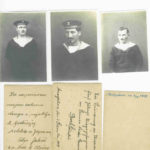



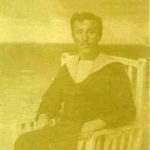





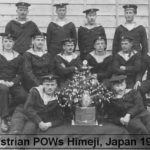





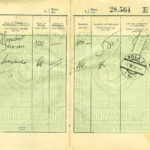




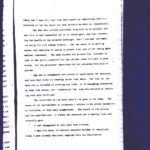
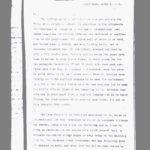
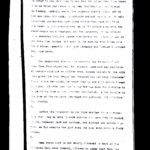
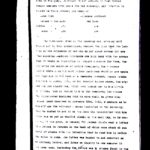
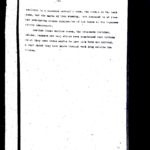

Login to leave a note